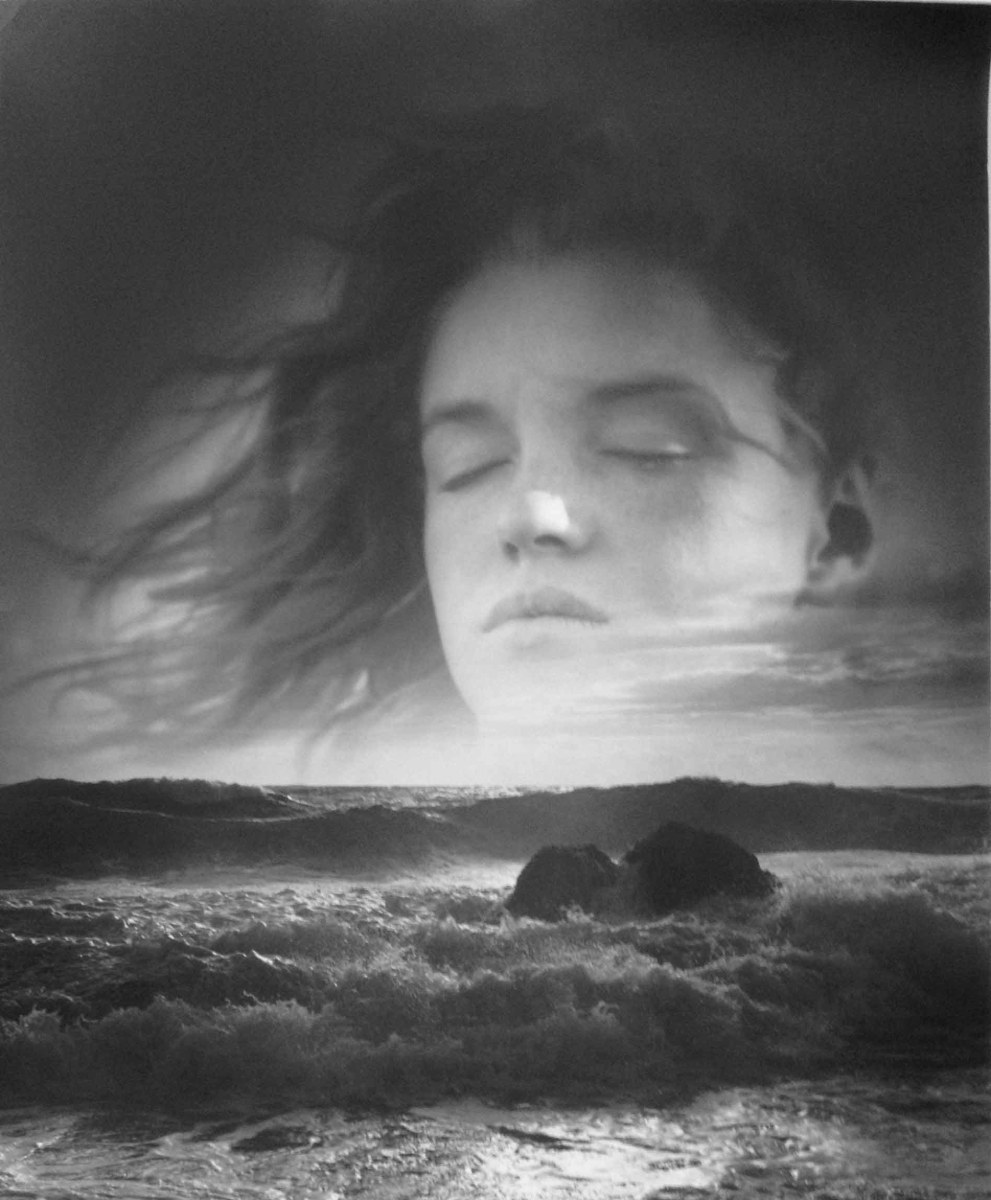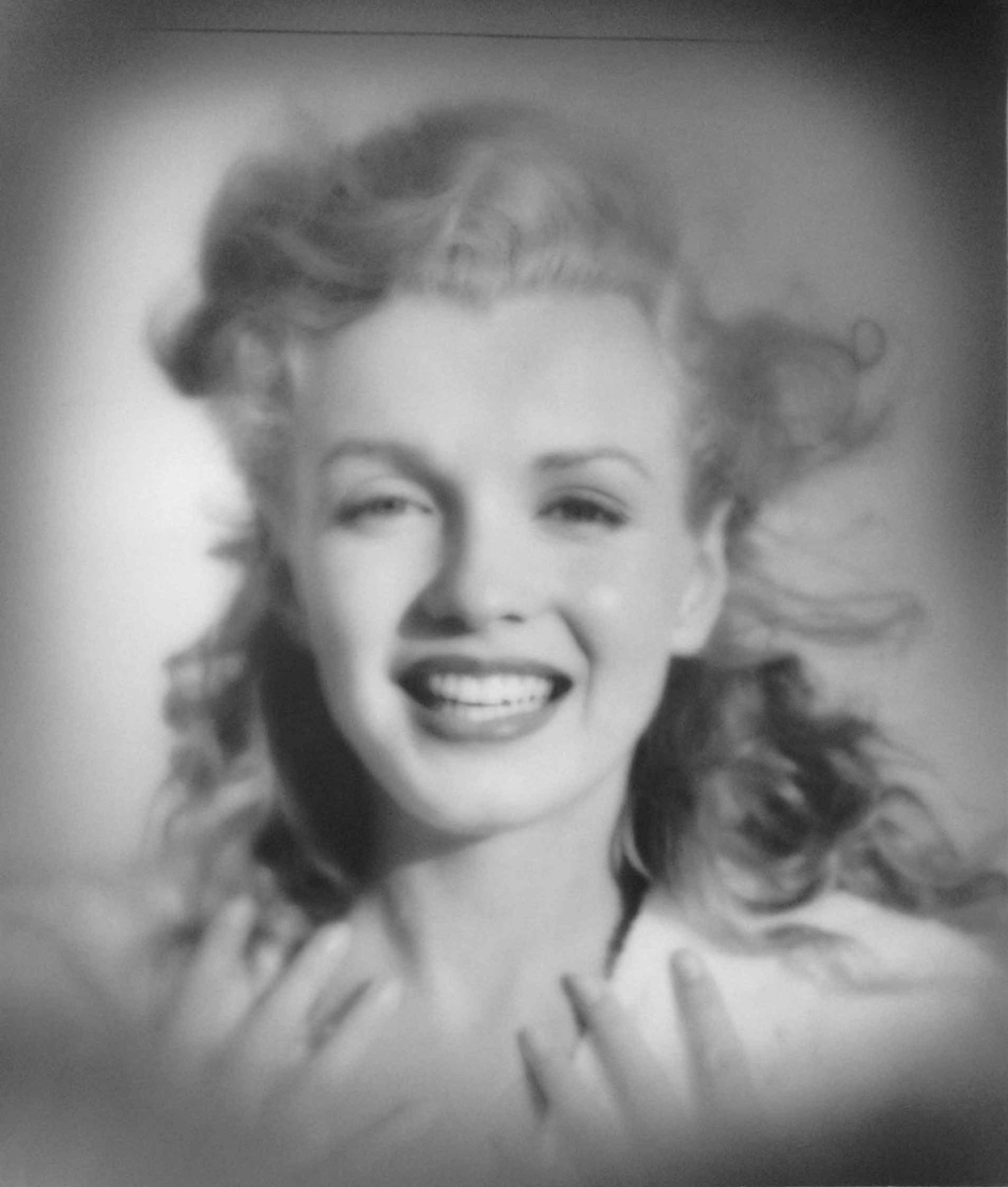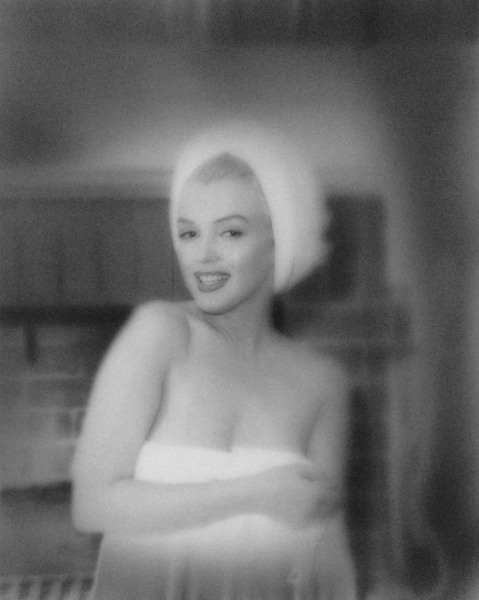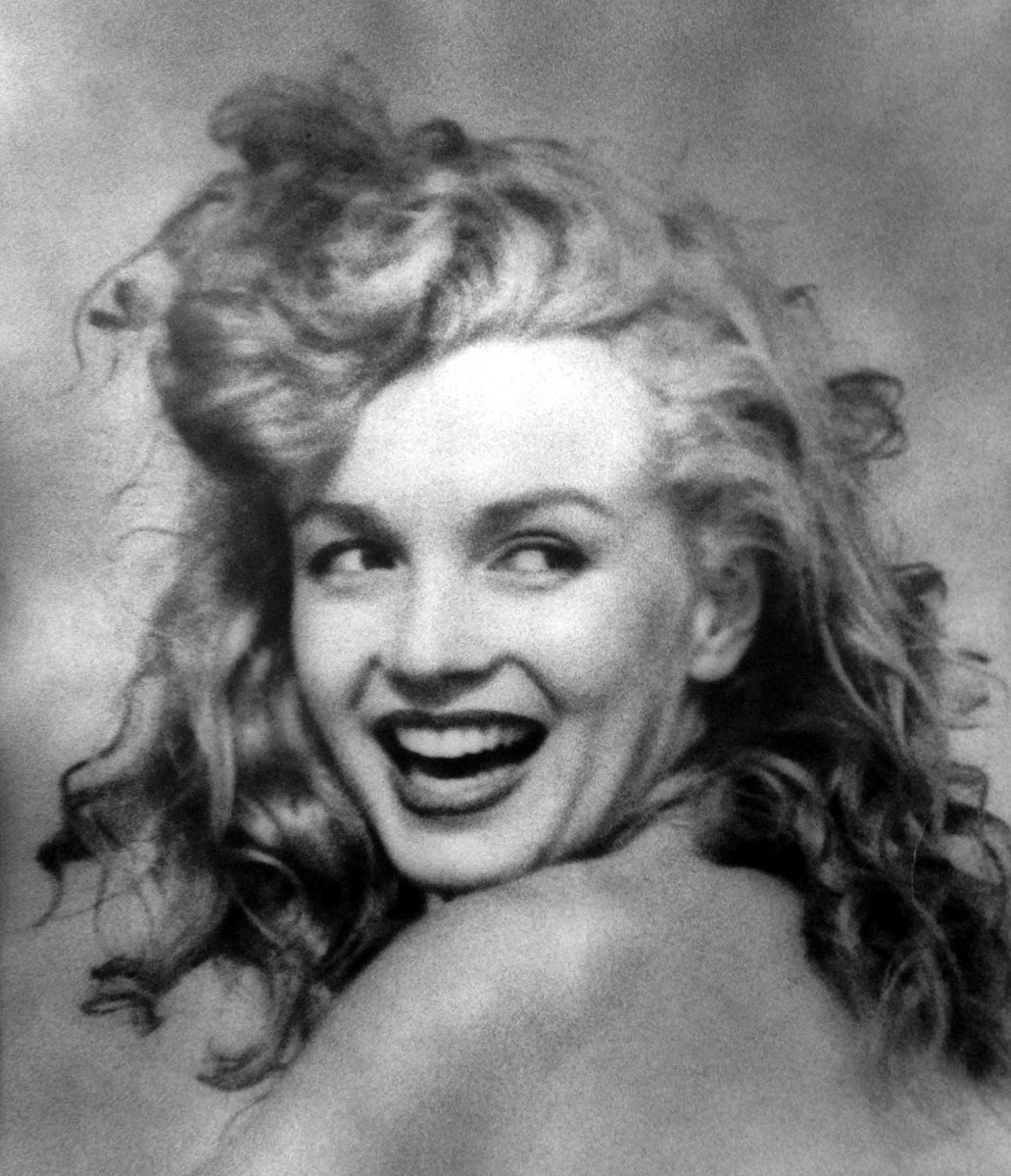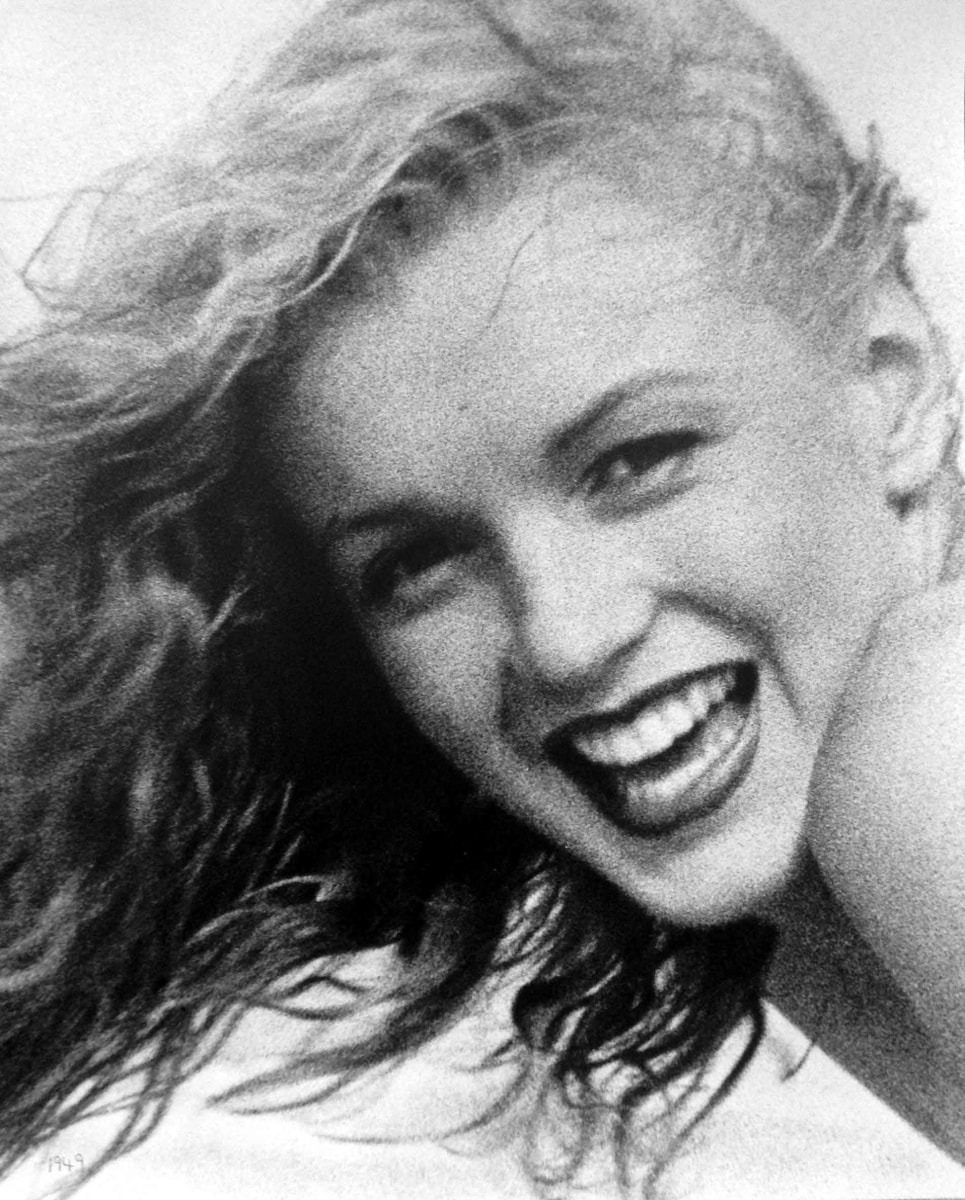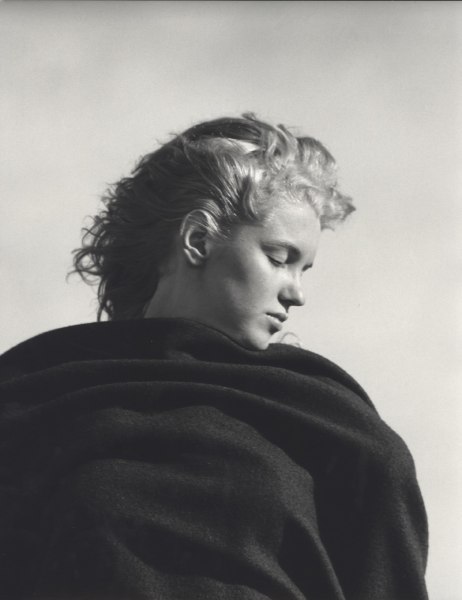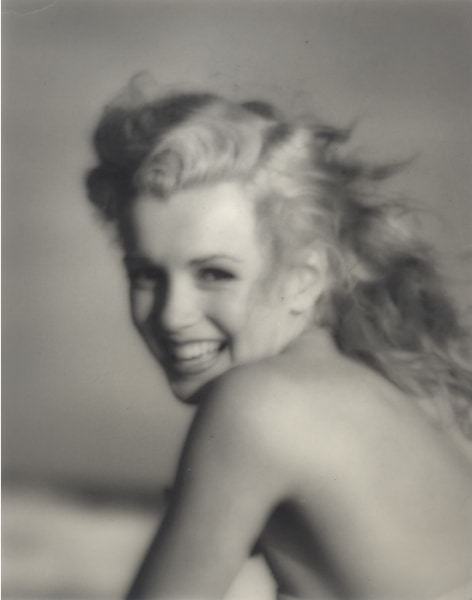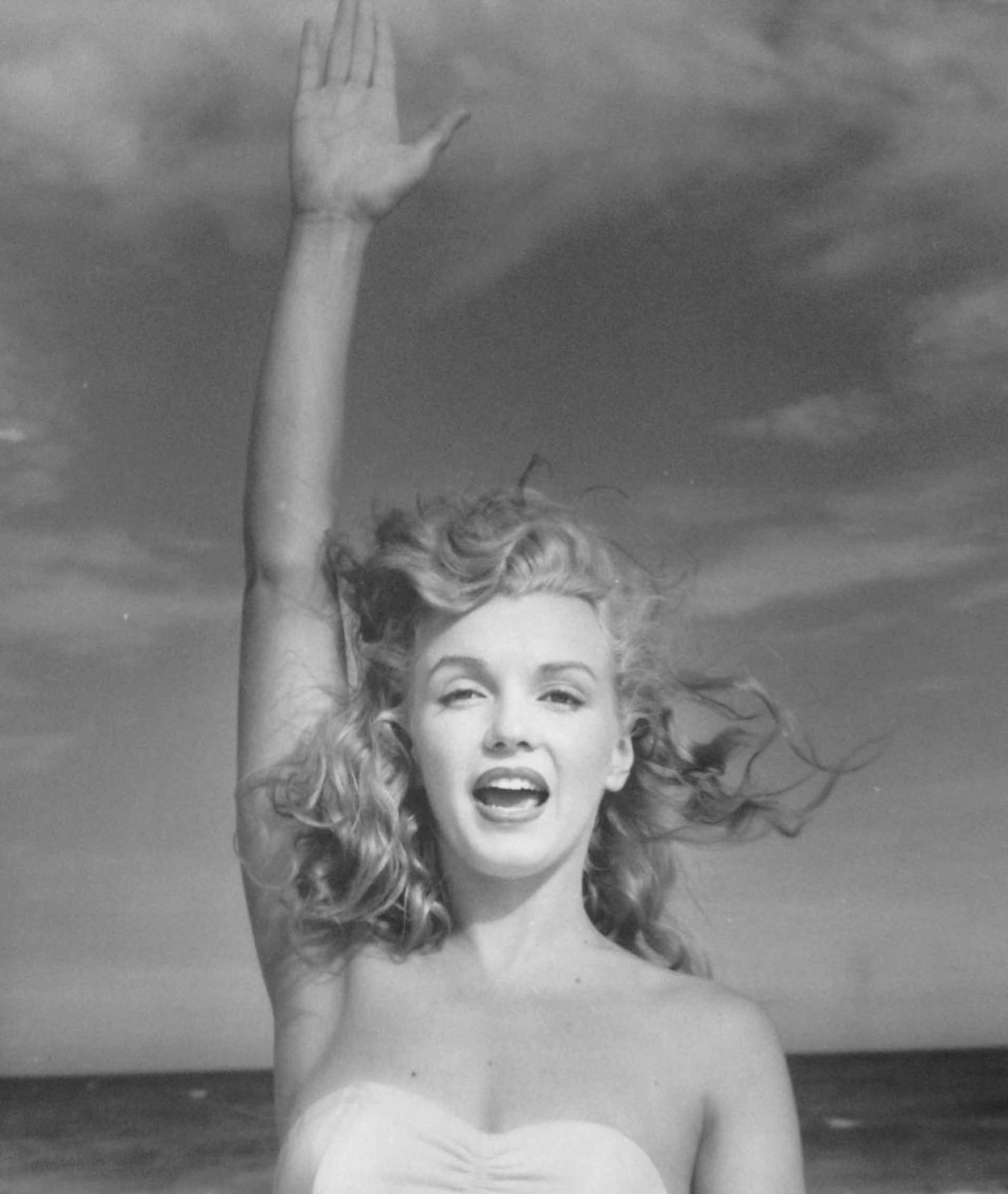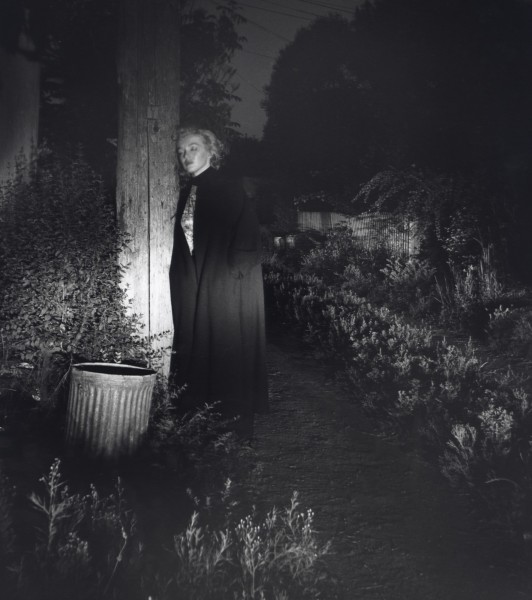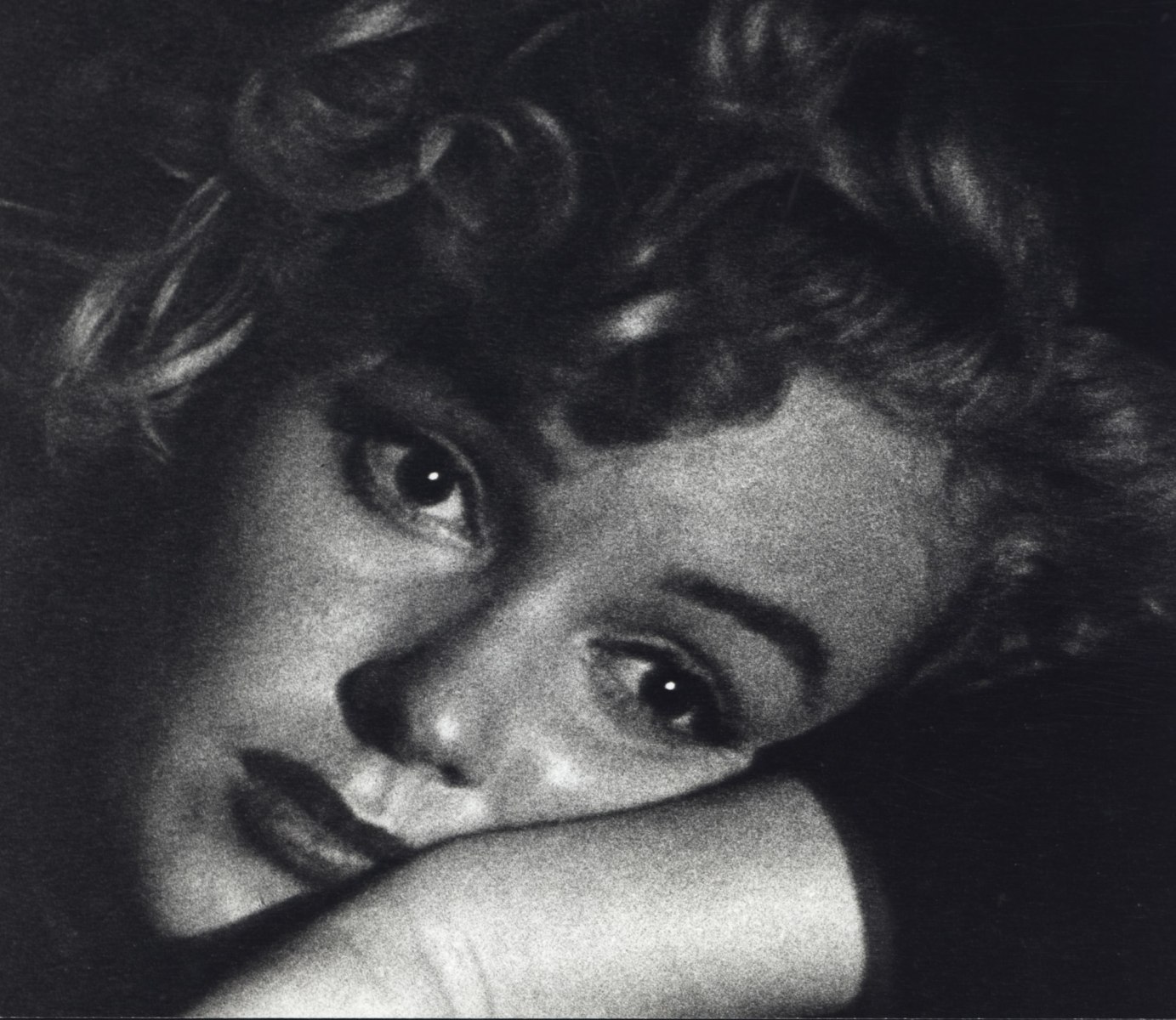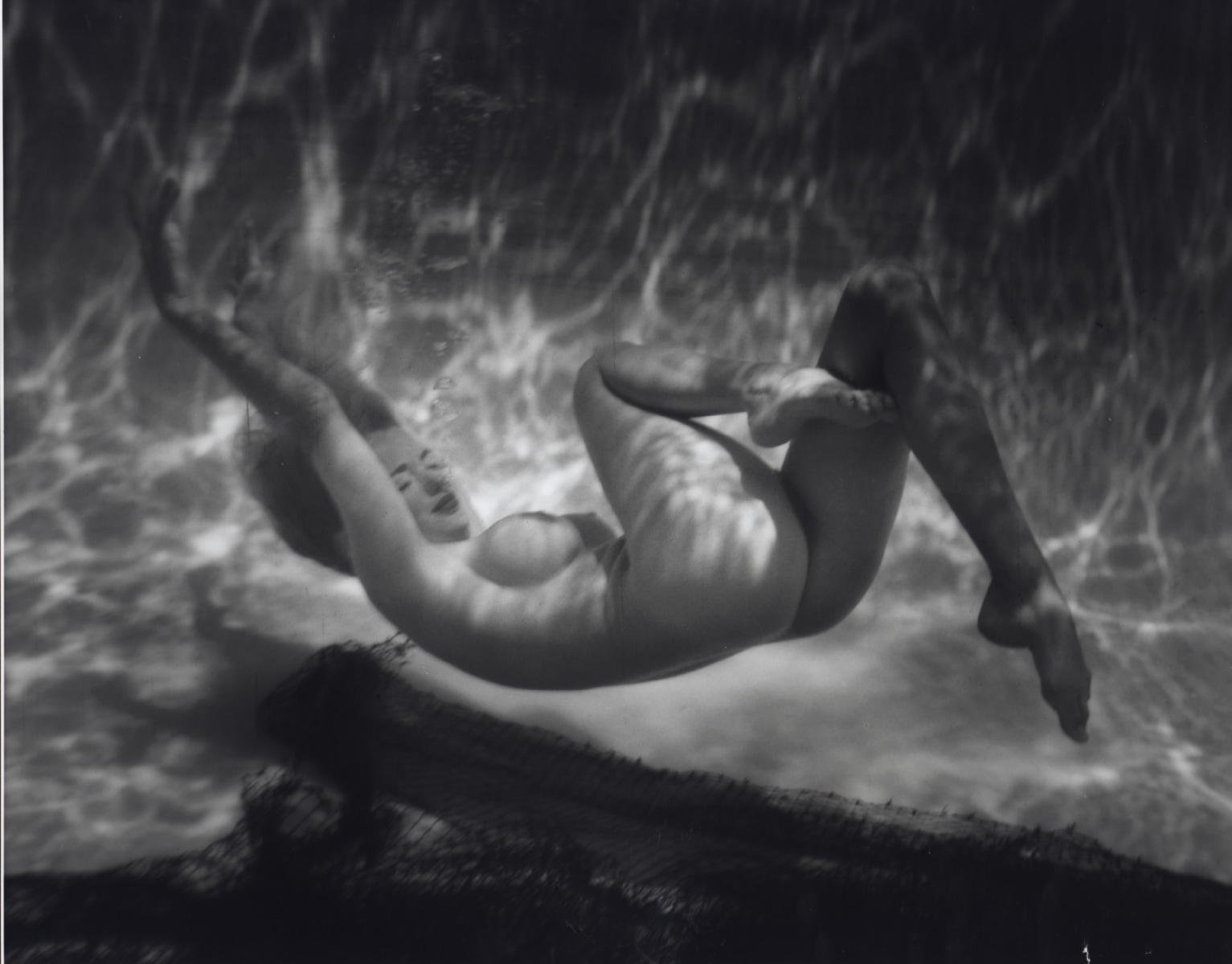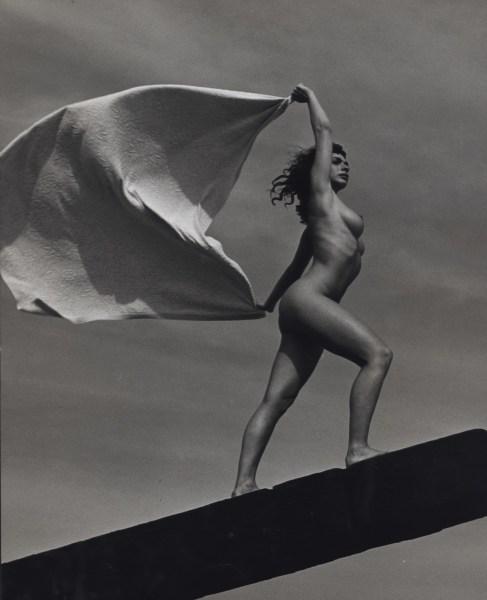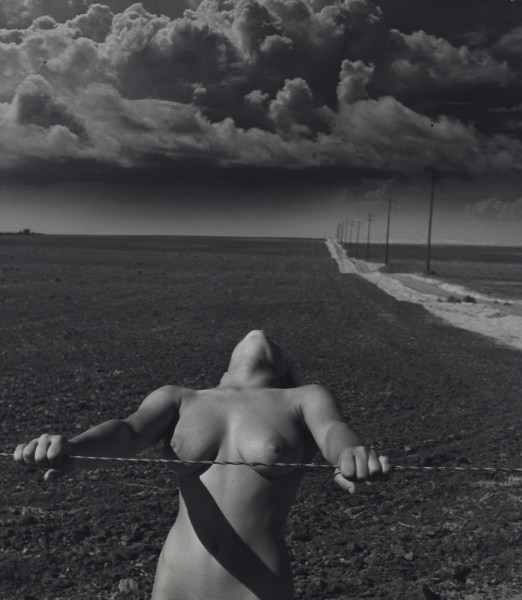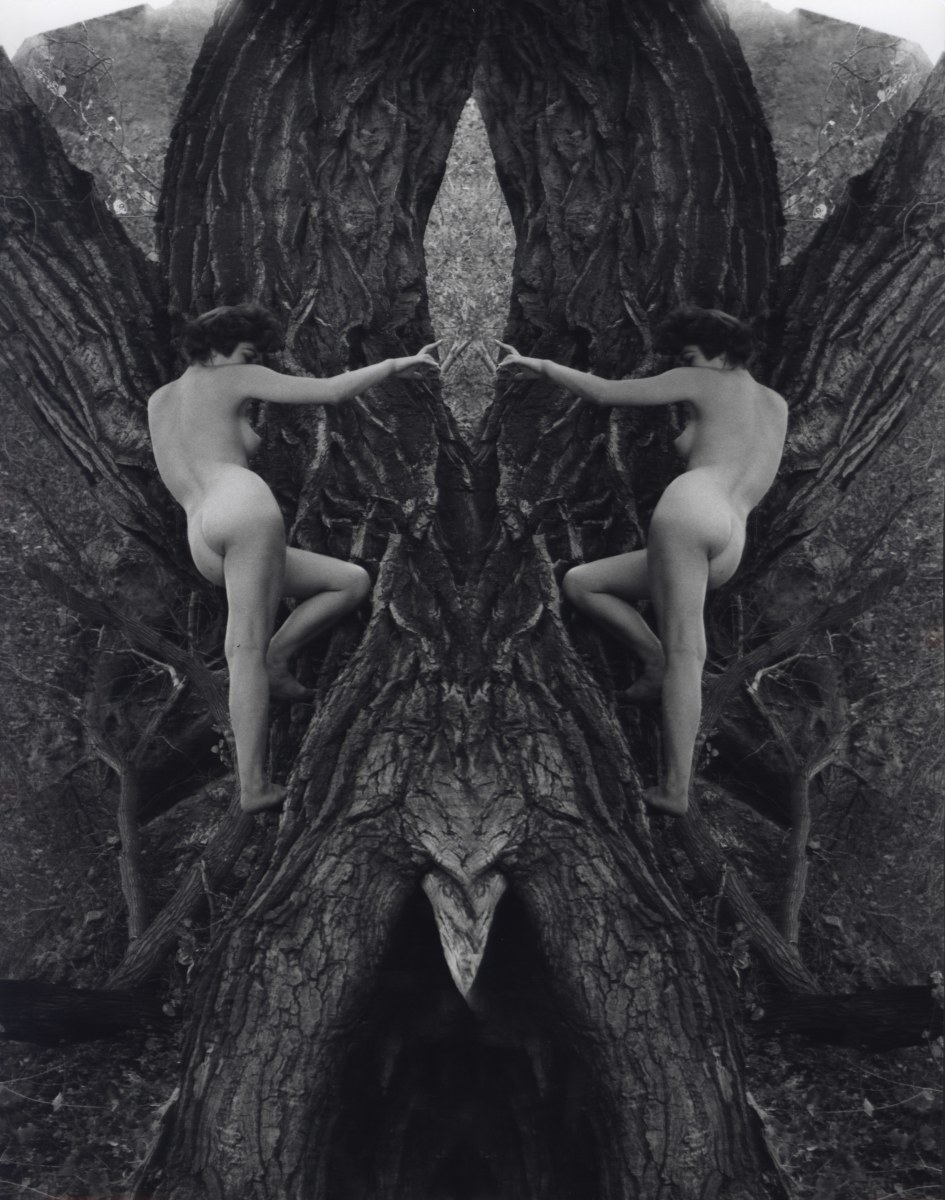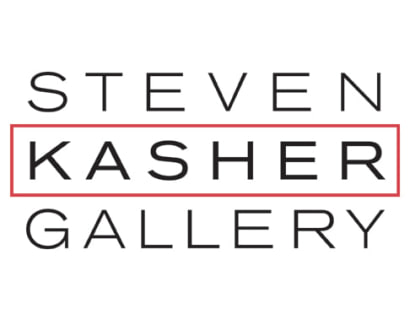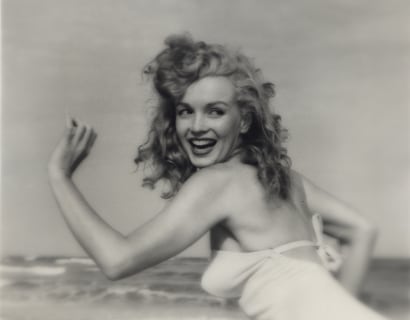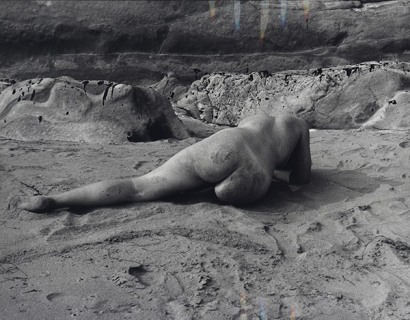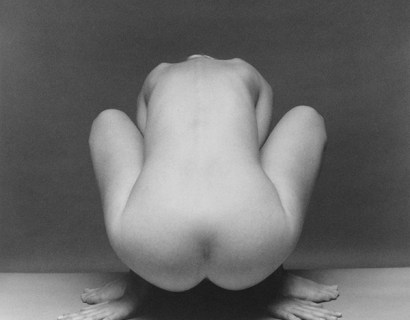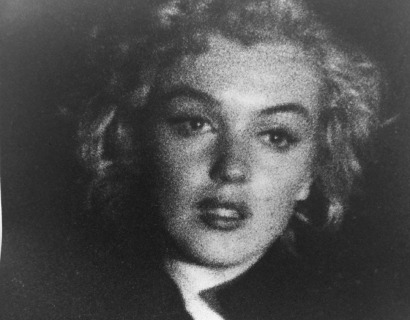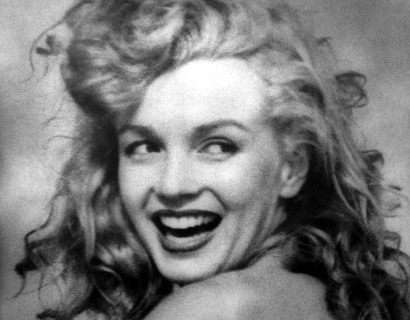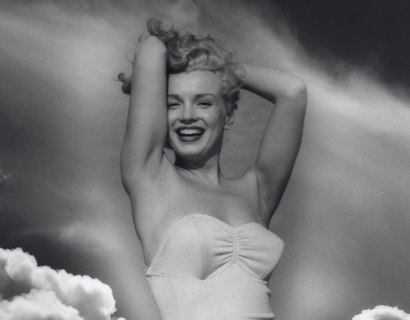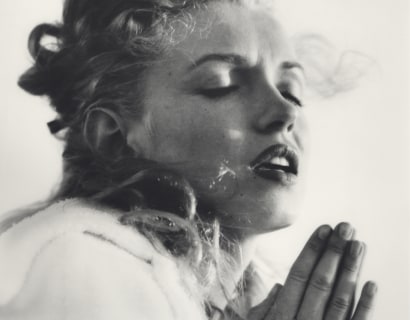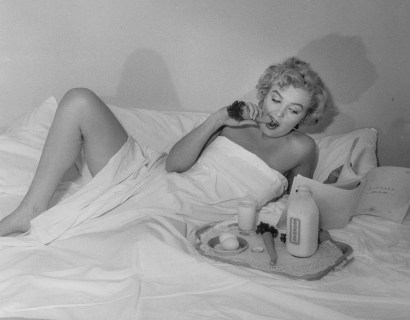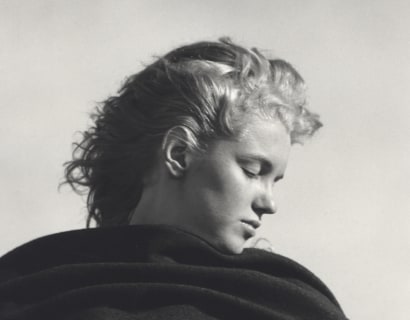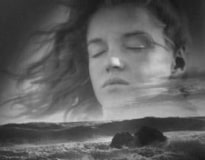
Steven Kasher Gallery is pleased to announce Andre de Dienes: Marilyn and California Girls, the first solo show of photographer Andre de Dienes in New York in over ten years. The exhibition features more than fifty lifetime prints from de Dienes’ two most famous series, Marilyn Monroe and California nudes. In 1945, De Dienes (1913-1985) was the first professional photographer to photograph Marilyn when she was just a model named Norma Jeane Baker. One of Marilyn’s first lovers, de Dienes was an intimate of Marilyn and photographed her privately in 1945, 1946, 1949 and 1953. His iconic photographs capture her transformation from sensitive and ambitious ingénue into Marilyn Monroe troubled star.
The exhibition will also highlight de Dienes’ avant-garde nudes. Like many West Coast photographers, including Ansel Adams, Edward Weston and Brett Weston, de Dienes was fascinated by the desert landscape. With his nudes in landscapes he experimented with double exposure and photomontage. His nudes sometimes take on uncanny postures reminiscent of Hans Bellmer’s Dolls.
In November 1945 de Dienes was a successful New York fashion photographer. He moved temporarily to Hollywood. His first task was to find a model for his experimental nude photography. De Dienes called numerous modeling agencies until an agency sent over a young lady who had been camping out in the office, eager to get her start in Hollywood. It was Norma Jeane Baker, a 19-year-old “miracle” and “sexy looking angel” as de Dienes wrote in his 1983 memoir. It was love at first sight. De Dienes didn’t take any nude photographs of young Norma Jeane, but invited her on a five-week trip. Though the trip resulted in a brief marital engagement, de Dienes returned to New York and their romance did not withstand the distance.
When he returned to California some months later, de Dienes found that the young and innocent model he knew as Norma Jeane had been made over into the coy budding actress Marilyn Monroe. Still fascinated by Marilyn’s expressive face, he asked her to accompany him to a beach in Malibu to take photographs for a book of poetry and philosophy he wanted to illustrate. The rare large scale photographs he made in 1946 depict Marilyn acting out various moods including happiness, introspection, serenity and sadness.
In the summer of 1949, Marilyn’s star began to rise. While in New York for the first time she called de Dienes and said “Andre, let’s take pictures again! Let’s make history! Do you have a nice bathing suit I can wear?” When he picked her up at the Pierre hotel, he discovered “a magnificent, elegant young woman, sophisticated like [he had] never seen her before.” But de Dienes preferred “a very casual Marilyn” for his pictures. He took her out of the craziness of the city to Tobay Beach on Long Island. Once on the beach she let go of her new sex-pot persona and returned to the innocent girl de Dienes first met, laughing and playing in front of the camera.
Their last shoot together happened late one night in 1953. Marilyn phoned de Dienes and told him she could not sleep. She proposed that they meet to take pictures somewhere in a dark valley in Beverly Hills. Without a flash or professional lighting, he lit Marilyn’s face with the headlight of his car. She posed sad and lonely. This was the first time that de Dienes came face to face with the dark side of Marilyn. De Dienes stayed in touch with Marilyn until her death in 1962, but never photographed her again after 1953.
Andre de Dienes was born in 1913 in what is now Romania. After arriving in Paris in 1933, he became a photographer for the Communist newspaper L’Humanité. He began working as a fashion photographer for Parisian couturiers and moved to New York in 1938 with the help of Esquire magazine editor Arnold Gingrich. In New York he photographed for Esquire, Vogue and Life. In 1951, de Dienes moved to Hollywood and began to photograph movie stars and to experiment with nudes and landscapes. His memoir Marilyn Mon Amour was published in 1985. In 2002, Taschen published de Dienes monumental monograph simply titled Marilyn. In addition, 24 books of his nudes have been published.
Andre de Dienes: Marilyn and California Girls will be on view June 9th – July 30th, 2016. Steven Kasher Gallery is located at 515 W. 26th St., New York, NY 10001. Gallery hours are Tuesday through Saturday, 10 AM to 6 PM. For press and all other inquiries, please contact Cassandra Johnson, 212 966 3978, cassandra@stevenkasher.com.
The First and Still Unknown Marilyn: Andre de Dienes and Norma Jeane
In November 1945 Andre de Dienes, a fashion photographer with a penchant for nude photography, moved to the Garden of Allah Hotel in Beverly Hills. His goal was to find models to photograph nude in the desert landscape for a new artistic project. He phoned Emmeline Snively, the no-nonsense, self-made woman behind Hollywood’s Blue Book Modeling Agency looking for a fresh face. Snively had just signed a determined 19 year old named Norma Jeane Dougherty. Norma Jeane was an orphan whose tenacity and girl-next-door appeal Snively took a special interest in. She told de Dienes she wasn’t sure the girl would agree to pose for nudes but that she was eager for more work and experience.
Norma Jeane arrived at his hotel that afternoon. In his memoir de Dienes says, “It was as if a miracle had happened to me. From the instant I looked at her and we began to talk, her voice, her smile and her beautiful blue eyes… Norma Jeane seemed to be like an angel…an earthly, sexy-looking angel sent expressly for me!” The next day he took Norma Jeane to Paradise Cove, a secluded beach north of Malibu, and took his first photographs of her. These are some of the earliest professional photographs of the would-be star. He was instantly charmed by her vitality and enthusiasm and “wanted to take her away from Hollywood right away on a long trip. Just go with her, everywhere! I felt completely enamored by her!”
There was only one problem, Norma Jeane was married. Though separated from her merchant marine husband and living with her former foster parent, “Aunt Ana”, the Dougherty family was not pleased with thought of their son’s wife going off with a brash Hungarian photographer. De Dienes knew he had to do some convincing if he was going to live out his fantasy. The next day during lunch with Norma Jeane and “Aunt Ana” he put his European charm to work. He regaled the two with his stories of photographing Hollywood stars including Shirley Temple and Ingrid Bergman. He offered to pay Norma Jeane $100 per week for posing on the trip, plus all expenses, including buying outfits for her to wear and all the food she could eat.
In the days that followed, de Dienes removed the backseat of his Buick Roadmaster and laid down a sheet of thick foam rubber. He covered it in blankets and pillows so Norma Jeane could sleep during the long drives, jokingly referring to it as her “little cage”. According to de Dienes, “Norma Jeane laughed like crazy when I told her she would become my little slave and prisoner, that I might even buy a long thin chain to attach one end of to her ankle and the other end to the car!” Their first destination was Death Valley where de Dienes planned to photograph the young model nude near Darwin Falls. When they arrived he simply couldn’t go through with it. He was already in love with her but too shy to ask her to expose herself to him for the first time out in the open. During their two week long journey, de Dienes fell madly in love. His 1983 memoirs recall his desire, “The good old sex drive motivated me, Norma Jeane must have sensed it right away.” Overcome with lust, he made several attempts to charm the young model into bed with him, once even knocking on her door in the middle of the night, prompting her to tell him to remain a “good boy” and return to his cabin. They traveled through California, Nevada, Arizona and Oregon. Looking at the photographs, one can see why de Dienes fell for her so hard and so fast. Though taken well before her studio-developed sex-pot persona, Norma Jeane innocently flirts with the camera. She beams at us in the desert and mountain landscape, her white teeth and ginger hair shining. Her outfits, from farm-girl to ski-bunny, are as naughty as they are innocent.
De Dienes’ budding affection in Norma Jeane wasn’t the only issue they encountered. They were chased through the desert by two would-be robbers, they paid a disastrous visit to Norma Jeane’s estranged mother Gladys who had just been released from a mental facility in Portland, they lost a host of photographic equipment to thieves during a storm and were pulled over by police who joked that they would drop the ticket if Norma Jeane would spend the night at the station.
One evening, stranded in a snowstorm near Mt. Hood, Oregon, the two wound up at the Government Lodge. The concierge informed them that there was only one room left. After two weeks of insisting on separate cabins Norma Jeane said “Let’s take the room, let’s not worry any more about anything!” Finally in the same bed, de Dienes made his move. As de Dienes recalls “We went to bed without the slightest nervousness, as if what was happening was the most natural thing in the world. It was a strange contrast to all the days of amorous emotions I had to fight…It felt like being in heaven. Sensuality, sexuality, idealism all mixed with tension…a marvelous combination of the self and the mind, a fantastic poetic feeling of sensuous desires and mental processes of the soul until the ultimate climax of an orgasm. The passion lasted for several hours. It was poetry and reality all mixed! [Afterwards] Norma Jeane was hugging me, I was kissing her tears. She said she had never had an orgasm before in her life. Young love, clashed in complete sincerity, was the end result that night. Why couldn’t I have made her pregnant? I asked myself ever after.”
The next day, de Dienes professed his love to her and promised they would be married as soon as she was divorced. They lounged carefree in the room, leaving only for one hour to take photographs of Norma Jeane on the snowy mountain. De Dienes had finally caught a glimpse of the “…sexy little vampire [she was], the future Marilyn was there in that room! A sex symbol was incubating that afternoon!” Shortly after, de Dienes received word that a friend in New York had died. He returned Norma Jeane to L.A. and went back to New York, convinced their engagement would last.
The photographs he took on their trip landed Norma Jeane her first magazine covers. She quickly became one of the most in demand and successful models at the Blue Book Modeling Agency. In the summer of 1946, De Dienes called and told her he was returning to L.A. and that they could finally get married. Though she had great affection for him, the movie studio that had just signed her wanted her to remain single until she built up her career. She broke the news to him saying, “Andre, please don’t come, I can’t marry you! I want to become an actress!” Determined to be a Hollywood star, a second marriage was not part of her plan.
On Labor Day 1946, Norma Jeane called de Dienes to her apartment. She told him she had a new name and in her flowery script wrote out Marilyn Monroe. De Dienes took the newly named Marilyn again to a deserted beach. After reading from a book of philosophical poetry, Marilyn posed for de Dienes interpreting various moods. In these photographs we see a bare-faced Marilyn embodying happiness, pensiveness, introspection, serenity, sadness and even death. When acting out death, she looks solemnly and painfully at the ground. When de Dienes asked her why her face appeared tormented in death instead of calm and peaceful, she insisted that was how she imagined her death.
In 1949, while in New York on a publicity tour for “Love Happy”, Marilyn called de Dienes. She said “Andre, Let’s take pictures again! Let’s make history!” After buying her two swimsuits and two parasols, he drove her to the isolated Tobay Beach in Long Island. In these photographs, Marilyn adores the camera almost as much as it adores her. Scampering confidently and joyfully on the beach, hair golden, skin luminous, body ripened, she is on the brink of stardom and feels it. These photographs show her startling transformation from shy Norma Jeane into sex kitten Marilyn. In 1949 or 1950, the aspiring actress overheard someone at a party call her a “chinless wonder”, she secretly went under the knife, postponing a screen test claiming that she had fallen on her chin. When she finally took the screen test, the director said “Honey, you should have cut your chin two years ago.” It is unknown whether these photos were taken before or after her surgery.
In 1950, de Dienes moved permanently to Hollywood and he and Marilyn forged a very successful working relationship. In 1952, de Dienes was assigned to photograph her for Pageant magazine. The now world-renown star sent her team away from her Bel Air Hotel bungalow to be alone with de Dienes. She posed for him suggestively wrapped in a towel and taking a bubble bath, playing every bit the “Blonde Heat”, but he also photographed her casually reading scripts in bed, exercising and going about her daily life. These photographs express their intimate friendship and her trust in him as a photographer and confidante.
Later, more troubling sides of Marilyn emerged. At 2:30am one morning in 1953, suffering from insomnia, Marilyn called de Dienes and proposed that he take pictures of her in a dark alleyway. Lighting her only with the headlights of his car, the photographs show us a sad and forlorn Marilyn. De Dienes wrote, “Was she just playing a melodrama in those pictures, or was she conscious that something was wrong in her life, that something tragic would happen to her?” These haunting images are the last photographs de Dienes would ever take of her.
Though they remained friends as she catapulted to stardom, de Dienes’ temper put a strain on their relationship. Always thinking of his early photographs as the turning point in her career, in 1960 he sent her two letters berating her for never acknowledging him for launching her to fame. On June 1, 1961, her birthday, de Dienes visited Marilyn at the Beverly Hills Hotel. The meeting ended in cross words and de Dienes’ stormed out of her hotel. It was the last meeting between de Dienes and his “little mushroom”.
In 1962, while preparing a pitch for Life magazine, de Dienes decided to dig up boxes of negatives, prints, articles and letters which he had buried ten years earlier when his photo laboratory was severely damaged in a storm. To his surprise the unpublished negatives from their early shoots remained mostly intact. A few weeks later, on August 5, 1962, De Dienes heard on the radio that Marilyn was found dead in her Brentwood home. Over the next ten years, de Dienes made the first prints of these never-before-seen photographs. In these prints, his lifelong obsession is revealed again. His final prints of Marilyn are a series of surreal idolatry, superimposing her face onto sunsets, seascapes, nightscapes, and beds of flowers.
By the 1970s Andre de Dienes, once a hot headed fixture of Hollywood, became a recluse. Though he published over 20 books of his photographs of nudes, he buried his final prints of Marilyn in his garage and never showed them to anyone. They would remain undiscovered for 20 years. Five years after his death in 1985, his wife Shirley, discovered them along with his memoirs. De Dienes might have been forgotten entirely were it not for the efforts of his widow, Shirley T. Ellis de Dienes, and Steve Crist, who together worked to bring the Norma Jeane archive back into the public eye. These rare lifetime prints will be on view in the exhibition Andre de Dienes: Marilyn and California Girls, at Steven Kasher Gallery June 9th – July 29th, 2016.


